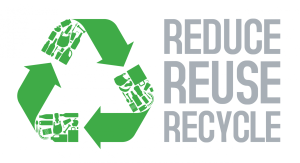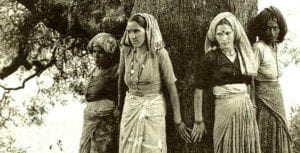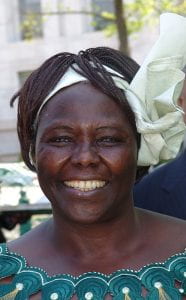My idea for our activism project involved trying to reduce my impact on the environment by limiting my intake of cow’s milk and using less plastic. I did this by rotating through alternative kinds of milk, including almond, coconut, and oat milks. When coming up against using plastics, I limited and reused plastics everywhere I could. I brought my own straw for my morning coffee, and didn’t purchase new, single use plastics, other than what is listed below. I also kept an ongoing log of my day’s experiences and what I ate and drank throughout the day that adhered to my goals. My goal for this week is to find ways that I can stick to reducing single-use plastics and alternative milk choices long-term.
Day 1: 4/11
Today I brought my steel straw to use for my coffee. I’m a total creature of habit, so I was worried I would forget to bring this, but I cleaned it out and brought it with me for the ride into work. I ordered my coffee with almond milk, which tasted delicious. My stomach didn’t seem to quite agree with it, but I will give it a shot for at least the next couple days to rule out this being an issue.
Something I noticed right away was the price jump. It was an extra 70 cents to use almond milk as opposed to my usual skim.
Lunch: ordered a veggie burger, with no cheese and a side of sweet potato fries. I could have gotten more veggie toppings, which I kind of wish I had, but ordering out can get pretty expensive! I didn’t really miss the cheese on this burger, I was surprised to find out. But when thinking about how it would have held the burger together better (it was kind of crumbly), I had an idea – to keep an eye out for places that have vegan and vegetarian options and “edits”. I would have gotten cheese if there was a vegan option! As well, instead of using another cup or bottle, I refilled this morning’s water bottle with the filtered water machine at work.
Shopping for snacks: A lot of the things I picked up had milk products in them, or were made in plant that also processes these products. So, for these things (crackers, oatmeal, granola bars), it will be hard to go completely vegan. I never realized all of these things might not be fully vegan! I did well on making vegetarian choices, but I did also buy a large plastic bottle of water. (I’m going on a short road trip to my father’s and needed something quick and portable that would hold a lot.)
Dinner: Due to extenuating circumstances, I couldn’t make the most ideal choices that I would have liked tonight, but I did what I could. I went out to dinner, and ended up eating a tuna salad sandwich, but drank out of reusable glasses. I opted to not use a straw. It was kind of frustrating only when taking the last few sips, and having the ice cubes fall into my face! Other than that, it was fine, and didn’t really miss the straw. The lack of options really stuck out to me today – no vegan options, few vegetarian and no paper straws.
Day 2: 4/12
Today I realized how hard it is to start a new habit! On my morning coffee run, I ordered it with almond milk, and the cashier automatically gave me a straw with it. Without thinking, I opened it and put it in my coffee – I didn’t realize it until I was halfway home! I was hoping this would be a little easier, but now realizing it will take a little more intention. I did better at lunch – I ordered out for a veggie sandwich, and it came in a paper container which was a bonus! Today wasn’t great due to my extenuating circumstances but will try to do better tomorrow! Dinner was pasta, which I didn’t realize came with (buttered) garlic bread, but overall not too bad.
Day 3: 4/13
Today I realized how difficult these initiatives are to accomplish, as many places don’t have the alternatives like certain milks or non-plastic options to offer. Today’s uses include:
- 1 plastic cup used in the morning; saved 1 straw by using a steel one with coffee.
- Lunch: reheated leftover pasta; no additional plastics or animal products used.
- Dinner: I had a long drive, so I had to grab fast food, but I limited myself where I could. I used 1 plastic to-go cup and saved 1 straw by using my own. I used no additional plastics that night.
Day 4: 4/14:
Today, I continued to use my straw for coffee, with which I got almond milk, but used 1 plastic cup. Saved 1 straw.
For lunch, I had a veggie sandwich with no cheese, and it was delicious. I normally get cheese added to sandwiches, and was worried I wouldn’t enjoy it as much, but I did! I typically would have ordered an iced tea in a plastic cup, but decided to drink the water I already had.
I went out to eat for dinner, and did not use a straw; I ordered a cheeseless burger for my meal.
Day 5: 4/15:
When I ordered my iced coffee this morning, I decided to try coconut milk, which I liked better! I did use a disposable plastic cup, but used my own straw.
For lunch, I did have chicken, but also a salad and soda – no other meat or cheese was included.
This evening was unfortunately kind of a mess, and had me somewhat doubting my ability to keep this activism up after the assignment is over! I can’t imagine being a very strict vegan or vegetarian and having to deal with hiccups in your day – it could really disrupt everything! I had plans with a friend, and for dinner I ended up needing to eat a slice of pizza, and using one plastic cup & straw for my drink.
Day 6, 4/16:
It’s been occurring to me these last few days that a lot of places that serve food and drinks don’t give you much of a choice with straws anymore. I ordered an iced coffee at lunch today, and it came with a straw already in the glass. I used to typically get paper straws or have to specifically ask for one; they aren’t freely given in some places. For my vegan/vegetarian choice, I asked for oat milk for my coffee and had an avocado and veggie-based appetizer. So far, I think the oat milk is my favorite! This and the coconut milk don’t bother my stomach like the almond milk did.
I wanted a water while I was out running errands later, but didn’t want to buy another plastic bottle. So I bought some coconut water to try, which comes in a paper box. I loved that aspect, but unfortunately didn’t like the water. I would like try to find another use for it.
Day 7, 4/17:
Today, I brewed coffee at home, and used almond milk, so no plastics used! I reheated some leftovers for meals, but did use one bottle of water.
Conclusion:
Overall, I would rate my success this week at about a B. I could have done better, but since I was setting out to make small, sustainable changes and educating myself about things, I think I accomplished what I set out to do. I’m a bit of an iced coffee addict, so I wish I could find a better way to get an iced coffee on the way into work in the morning that is convenient and timely, without using a single use plastic cup. I have a long commute with heavy traffic, so can only afford quick AM stops.
All of the single-use water bottles I used this week were ones I had already bought. Going forward, though, I would like to see what kind of alternatives I could come up with to use less of these bottles. Our town water isn’t very good as drinking water, so I am considering buying a Brita. I do like Poland Springs water a lot, so I am planning to buy a large refrigerator sized container instead of a case of water bottles. For either of these options, I could use fill up a portable glass and reusable straw.
Throughout the week, I looked into these alternative milk options to see what the best option was. The types I tried were the most readily available, and had less fat and calories than cow’s milk (coconut milk was higher in calories, though). Coconut milk is known to be more hydrating as well. If I could do this experiment over, and I think I will, I would give myself a little more time to prepare. Working full time and handling school left little time for preparation, so I would like to do a little more research into easy, affordable options. I’m happy to say that in the week since I completed this project, I have not used any more plastic straws! This is certainly something I can maintain in the future.
Plastic use Tally
Straws saved: 7
Straws used: 3
Plastic cups/bottles used: 7
Cups/bottles saved: 2
Note: Since I did not purchase any new single-use bottled waters this week, I did not tally these in my counts.




